Random Posts
3/random/post-list
Popular Posts
Contact form
Basic tripping settings of Circuit Breker
Dhruvang Suthar
November 03, 2019
There are (at least) six basic adjustable tripping settings (functions) you really should understand in order to fully understand how circuit breaker actually works.
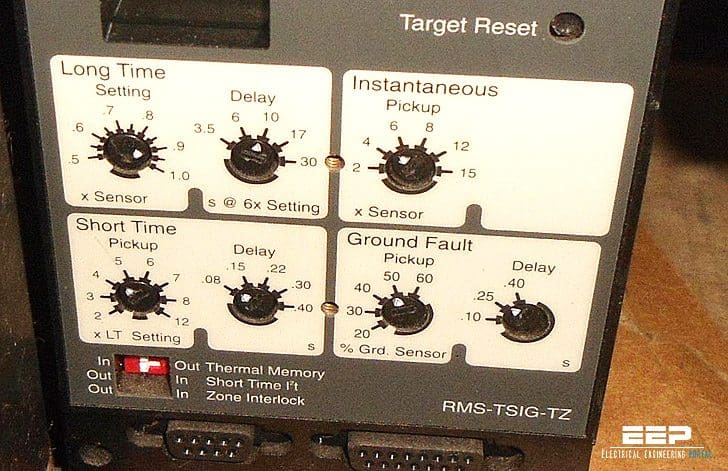
All these adjustable functions actually shape the time-current curve of a circuit breaker and allows proper tripping according to the network parameters and also the proper coordination between upstream and downstream devices.
Note that modern circuit breakers (MCCB, ACB) mostly have an electronic tripping unit which is much more advanced comparing to these explained here, but the basics are the same, very same.
So, let’s start with explanation!
- Continuous Amps (Ir)
- Long-Time Delay
- Short-Time Pickup
- Short-Time Delay
- Instantaneous Pickup
- Ground Fault Pickup
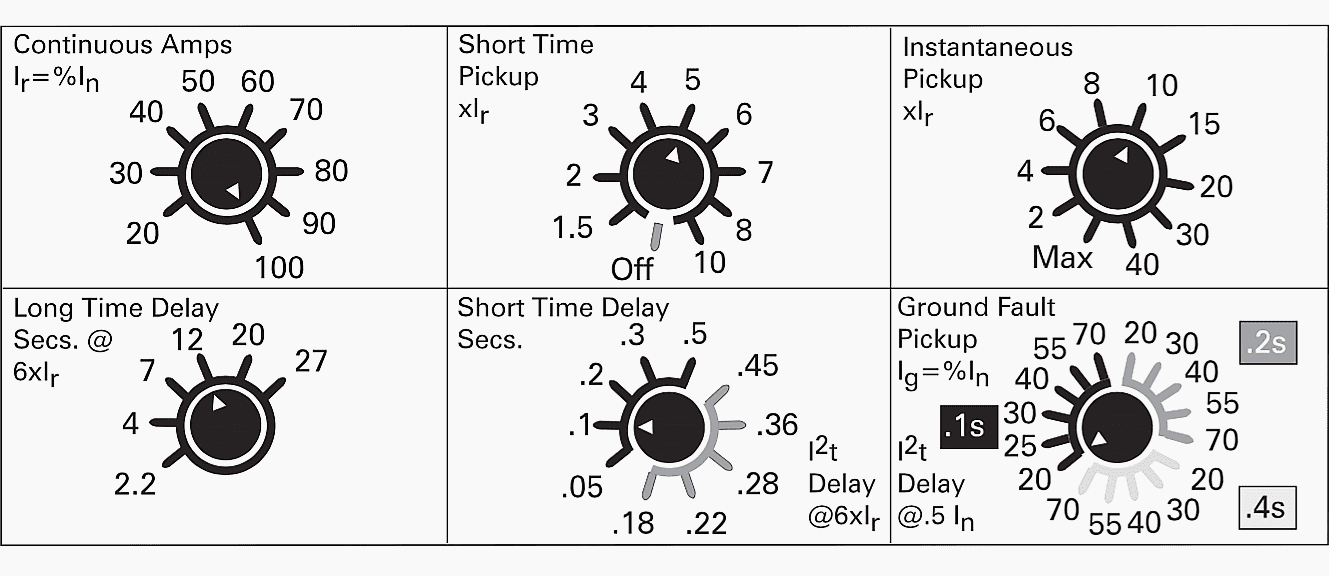
The below time-current curve reflects one possible setup for a 1200 ampere circuit breaker with a nominal (maximum continuous ampere) rating of 1000 amps. This time-current curve will be the basis for discussing adjustable tripping settings of the circuit breakers.
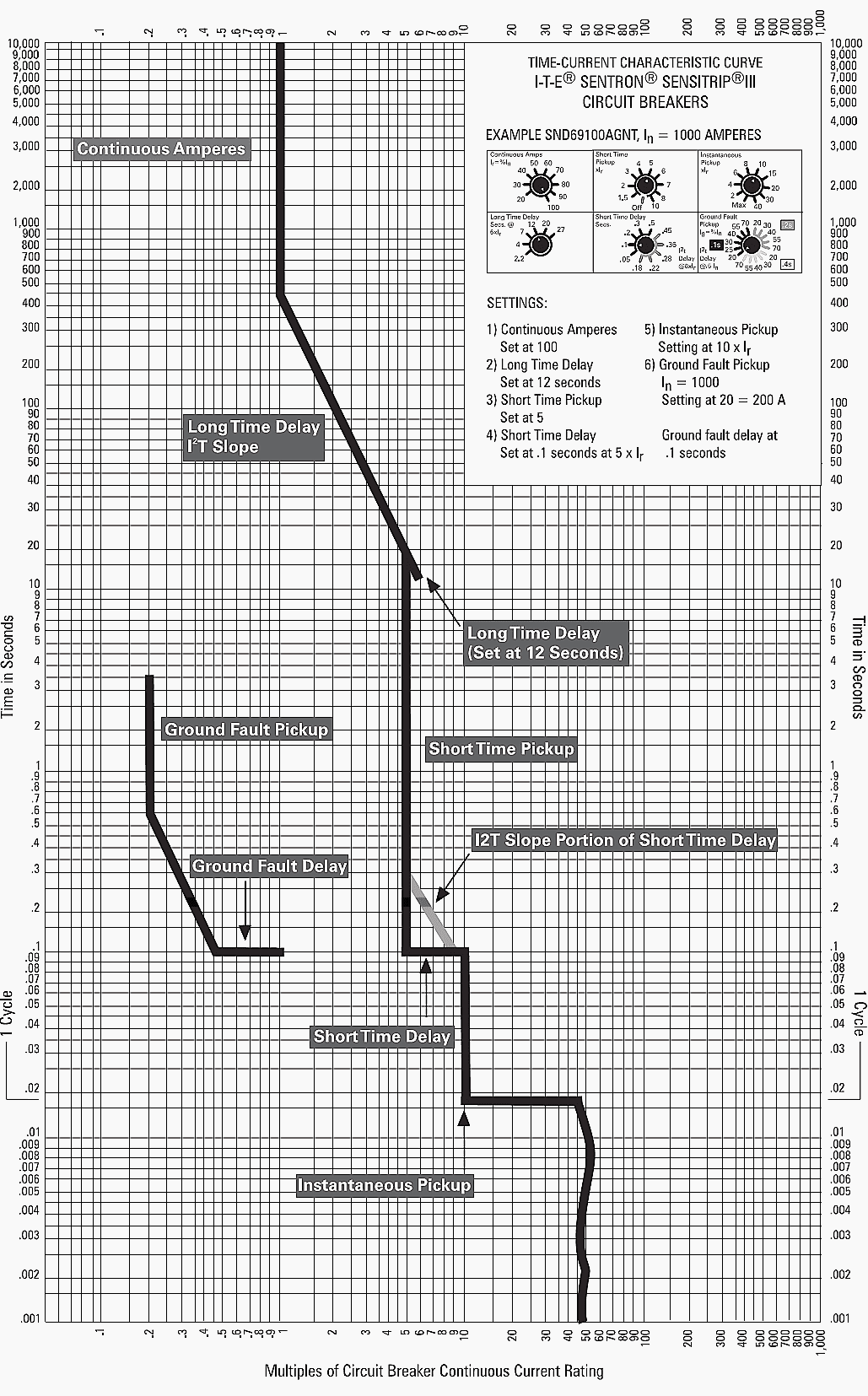
1. Continuous Amps (Ir)
Continuous Amps (Ir) varies the level of current the circuit breaker will carry without tripping. Ir is a percentage of the circuit breaker’s nominal rating (In). Continuous amps can be adjusted from 20 to 100 percent of the circuit breaker’s nominal rating.
For example, a 1000 amp breaker can be changed from 1000 amps to 800 amps by adjusting the breaker continuous amps setting to 80%.
![Continuous current [Amps]](https://electrical-engineering-portal.com/wp-content/uploads/2016/06/continuous-current-amps.png)
2. Long-Time Delay
Long-time delay causes the breaker to wait a certain amount of time to allow temporary inrush currents, such as those encountered when starting a motor, to pass without tripping.
The adjustment is from 2.2 to 27 seconds at six times the continuous amps (Ir) setting.
As shown below, the long-time delay effects the position of an I2T slope. This means that lower levels of current will allow the breaker to remain online for longer periods of time.
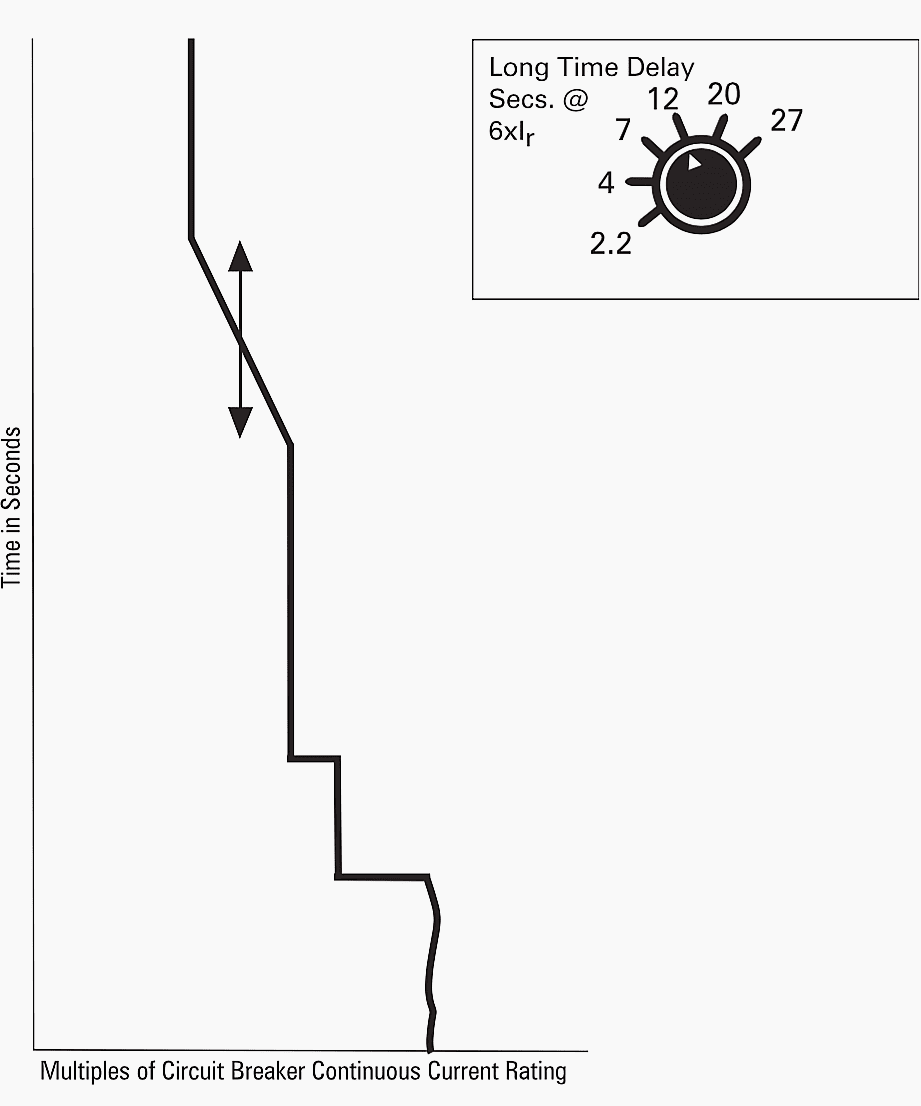
3. Short-Time Pickup
Short-time pickup is used for selective tripping. The short-time pickup function determines the amount of current the breaker will carry for a short period of time, allowing downstream protective devices to clear short-circuits without tripping the upstream device.
Short-time pickup is adjustable from 1.5 to 10 times the trip unit ampere setting (Ir).
For example, a 1000 ampere frame can be adjusted to trip anywhere from 1500 to 10,000 amps. The switch also has an “OFF” position to eliminate short-time pickup and short-time delay.
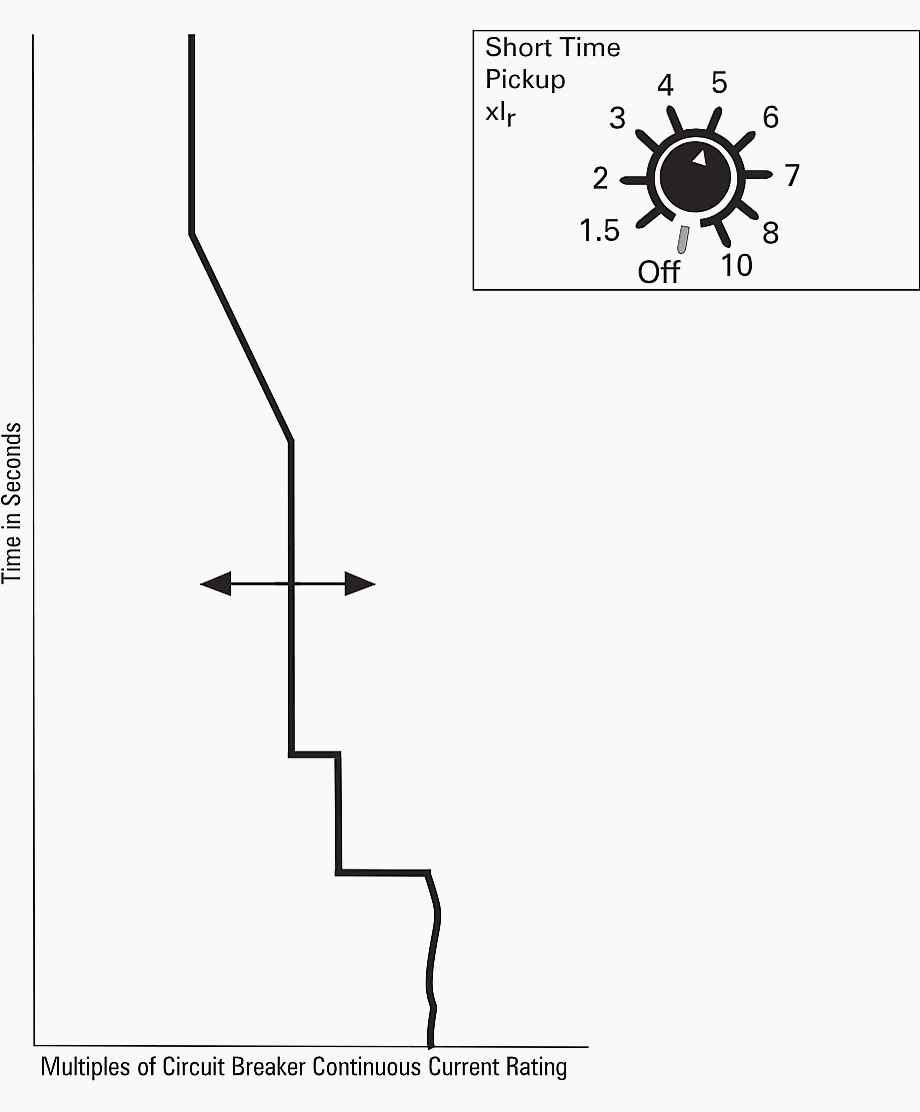
4. Short-Time Delay
Short-time delay, used in conjunction with short-time pickup, controls the time involved in postponing a short-time pickup trip.
There are two modes: fixed time, or I2T ramp. Fixed time is adjustable from .05 to .5 seconds. The I2T ramp mode is adjustable from .18 seconds to .45 seconds, providing a short inverse time ramp.
This allows better coordination with downstream thermal-magnetic circuit breakers and fuses. A fixed instantaneous trip point of 10,000 amps trips the breaker automatically and overrides any pre-programmed instructions.
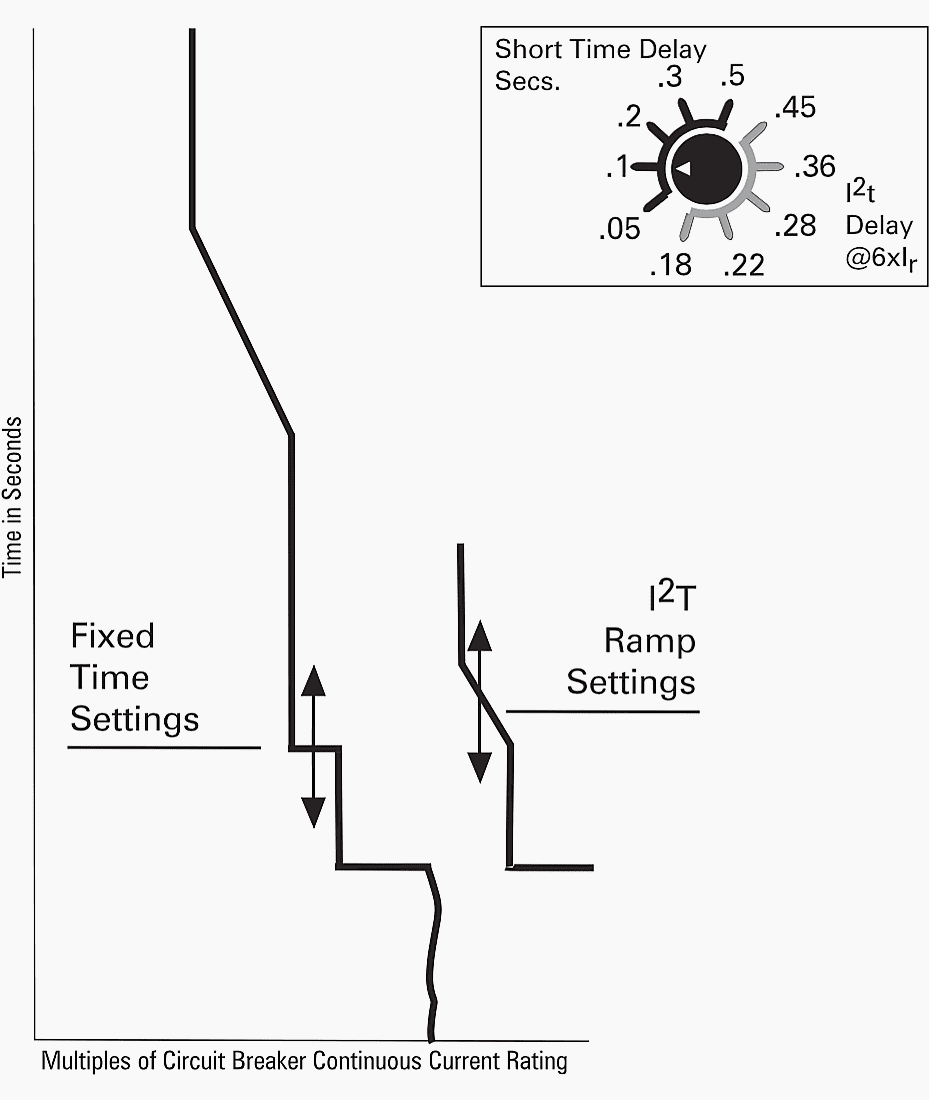
5. Instantaneous Pickup
Instantaneous pickup is used to trip the circuit breaker with no intentional delay at any current between 2 and 40 times the breaker’s continuous ampere setting (Ir).
In this example instantaneous pickup has been set to 10 times the continuous amp setting, or 10,000 amps (10 x 1000) with a continuous amp setting of 1000 amps. In this case a higher setting would still trip at 10,000 amps due to a fixed instantaneous override of 10,000 amps which automatically trips the breaker regardless of the instantaneous pickup setting.
If the continuous amp setting had been 300 amps, setting the instantaneous pickup at 10 would make the instantaneous setting equal to 3000 amps, well below the fixed instantaneous override.
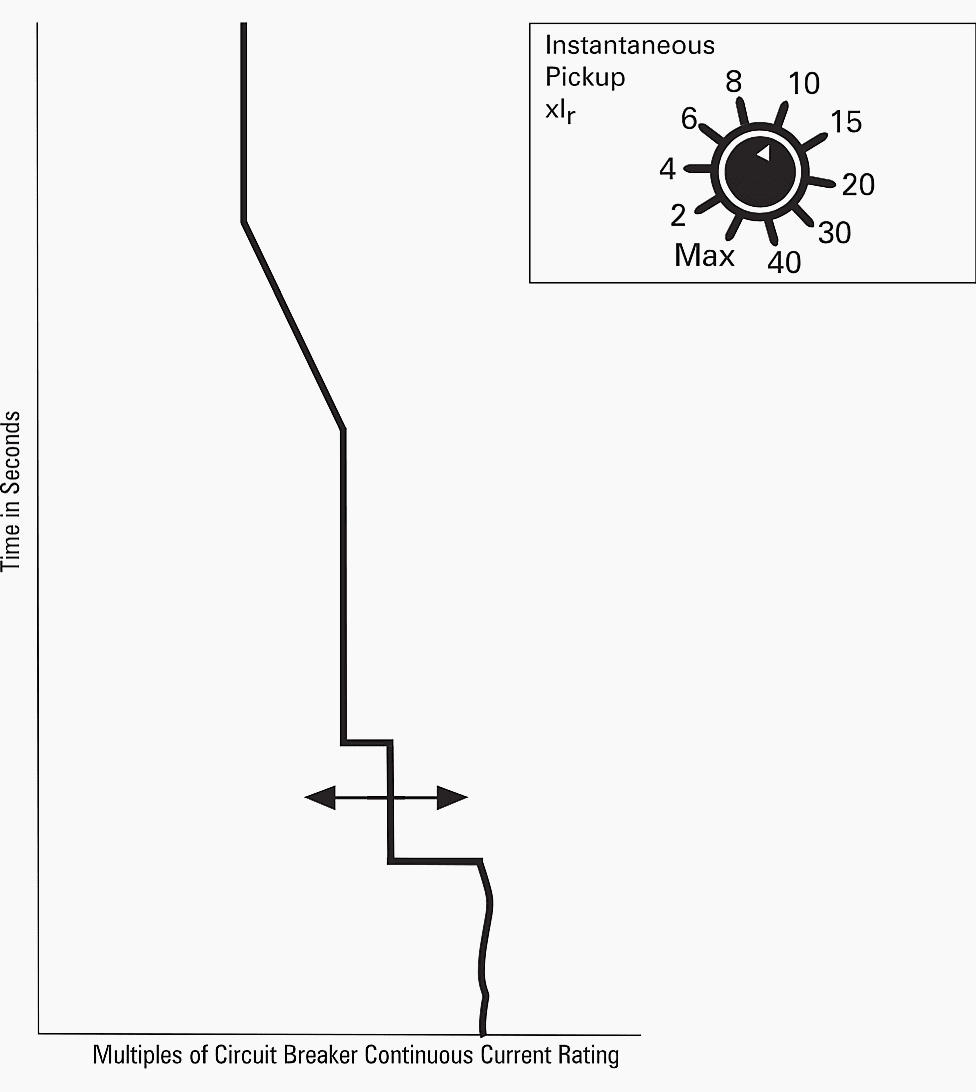
6. Ground Fault Pickup
Ground fault pickup controls the amount of ground fault current that will cause the breaker to interrupt the circuit. The adjustment can be set from 20 to 70% of the maximum breaker rating. In compliance with NEC® 230-95 (A), no trip point setting exceeds 1200 amps.
The ground fault pickup is divided into three sections; .1s, .2s, and .4s. This feature adds a time delay of .1, .2, or .4 seconds to the breaker’s trip when a ground fault occurs.
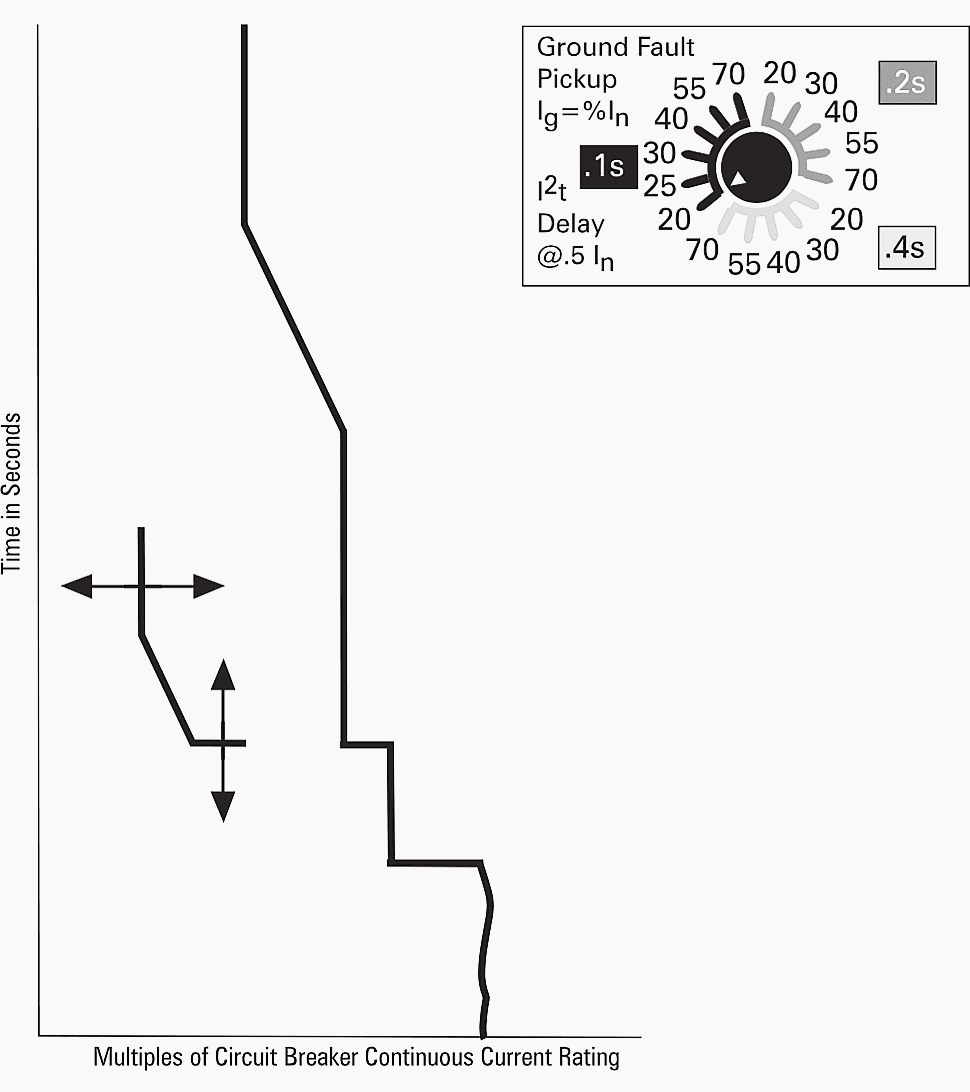
Circuit breaker coordination
The ground fault pickup time delay feature is useful for circuit breaker coordination. In the following scheme, upstream breaker “A” has been set to .2s and downstream breakers “B” and “C” have been set to .1s.
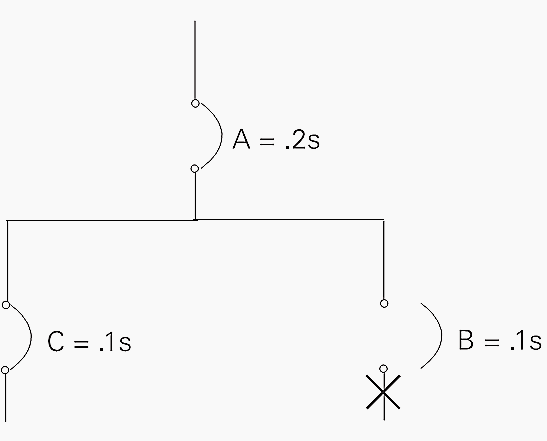
You may like these posts
Certificate of Completion

Certificate No.CERT001561786-EMI
Total Pageviews

This Page is a little effort to make you Sharing of some own materials .This is just a Kick-Start to make the aware of Practical World !!! Best of luck.-DHRUVANG SUTHAR
Created By SoraTemplates | Distributed By Gooyaabi Templates

0 Comments